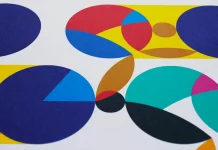The Silent Language of the Page: Here Comes a Comprehensive Overview of all International Paper Sizes.
Even in our increasingly digital world, the physical page continues to hold immense power. The document you print, the book you read, the poster that catches your eye—all begin with a fundamental choice: the size of the paper. This decision, often made unconsciously, is governed by a surprisingly elegant system of international standards. Understanding these paper sizes is not merely a technical exercise for designers or printers; it is to grasp a universal language of dimension and proportion that shapes how we create and consume information globally. This is not just about paper; it’s about a framework for clarity, efficiency, and international communication.
The quiet genius of these standards lies in their ability to bring order to a potentially chaotic landscape. From a business card in Tokyo to an architectural plan in Berlin, a shared understanding of dimensions ensures consistency and interoperability. This system facilitates international trade, simplifies design workflows, and even impacts postage costs. As we navigate a world where digital and physical media coexist and interact, a firm grasp of these foundational principles is more relevant than ever. It allows us to create with intention, whether the final product is held in the hand or viewed on a screen.
The A-Series: A System of Perfect Proportions
At the heart of the international standard for paper sizes is the ISO 216 standard, which defines the popular A-series. The ingenuity of this system, first conceived by German scientist Georg Christoph Lichtenberg in 1786 and later standardized by Walter Porstmann in 1922, lies in its unique aspect ratio.
The Magic of the √2 Aspect Ratio
Every sheet in the A-series has an aspect ratio of the square root of 2 (approximately 1:1.414). This clever mathematical foundation means that when you cut a sheet in half parallel to its shorter sides, you get two smaller sheets with the exact same aspect ratio. For example, cutting an A3 sheet in half yields two A4 sheets. This scalability is incredibly efficient, minimizing waste and simplifying the process of scaling documents up or down without distortion or the need for cropping.
Understanding A-Series Sizes
The system begins with A0, a sheet of paper with an area of exactly one square meter. Subsequent sizes are derived by halving the preceding size. This creates a predictable and logical progression:
- A0 (841 x 1189 mm): The starting point, often used for technical drawings and large posters.
- A1 (594 x 841 mm): Ideal for flip charts, architectural plans, and larger posters.
- A2 (420 x 594 mm): A common choice for art prints, diagrams, and window displays.
- A3 (297 x 420 mm): Frequently used for presentations, charts, and drawings. Many office printers can handle this size.
- A4 (210 x 297 mm): The most ubiquitous paper size in the world, serving as the standard for letters, documents, and magazines.
- A5 (148 x 210 mm): The size of a typical notebook or paperback book.
- A6 (105 x 148 mm): Commonly used for postcards, flyers, and small booklets.
The smaller sizes, such as A7 and A8, are perfect for items like large labels or standard playing cards, respectively.
The B-Series: The Professional’s Choice for Posters and Oversized Prints
While the A-series is perfect for standard office and consumer use, sometimes a project demands a little more impact. This is where the ISO B-series of paper sizes comes in. The B-series is a smart solution for when an A-series sheet is just slightly too small.
The B-series sizes are defined as the geometric mean of the corresponding A-series size and the next larger A-series size. For example, the B4 size is between A3 and A4 in dimension. This makes them an excellent intermediate choice, particularly popular in professional printing for items that need to stand out.
- B0 (1000 x 1414 mm): A massive format for eye-catching posters and advertising.
- B1 (707 x 1000 mm): A go-to for large posters, event signage, and displays.
- B2 (500 x 707 mm): Another very popular poster size, offering significant visual real estate.
- B4 (250 x 353 mm): Often used for oversized documents, special publications, and menus.
The B-series is also defined by the Japanese Industrial Standards (JIS), which uses a slightly different set of dimensions. While similar, it’s a critical distinction to be aware of when working with international clients or printers.
The C-Series: The Perfect Fit for Envelopes
Have you ever wondered why an A4 letter fits so perfectly into a standard envelope? The credit goes to the ISO 269 standard, which defines the C-series for envelopes. This series is ingeniously designed to accommodate the A-series paper sizes.
The dimensions of a C-series envelope are the geometric mean of the A and B series sizes with the same number. In practice, this means that a C4 envelope is perfectly sized to hold a flat A4 sheet. A C5 envelope will comfortably fit an A4 sheet folded in half (which is an A5 size), and a C6 envelope is ideal for an A4 sheet folded into quarters (an A6 size). This logical system eliminates guesswork and ensures a professional presentation.
A Tale of Two Systems: North American Paper Formats
While most of the world has adopted the ISO standards, North America, primarily the United States and Canada, continues to use a different system. This system includes familiar names like Letter, Legal, and Tabloid.
Common North American Sizes
- Letter (8.5 x 11 inches / 215.9 x 279.4 mm): The direct counterpart to A4, Letter is the standard for academic and business documents in North America. Its aspect ratio is different from A4, which can cause formatting issues when sharing documents internationally.
- Legal (8.5 x 14 inches / 215.9 x 355.6 mm): Longer than Letter size. Legal paper is traditionally used for legal documents, as its name suggests.
- Tabloid (11 x 17 inches / 279.4 x 431.8 mm): Essentially two Letter-sized sheets side-by-side, Tabloid is the equivalent of A3 and is used for newsletters, small posters, and drawings.
The American National Standards Institute (ANSI) also defines a series of paper sizes (ANSI A, B, C, D, E) based on the Letter format, similar to how the ISO system is based on A0.
Beyond the Basics: Other Important Formats
While the A, B, C, and North American series cover most needs, other specialized formats exist for specific industries.
- Architectural Sizes (ARCH): Architects often use a series of sizes (Arch A, B, C, D, E) with different aspect ratios that are better suited for architectural drawings.
- Untrimmed Paper (RA and SRA): Professional printers use the RA (Raw Format A) and SRA (Supplementary Raw Format A) series. These sheets are slightly larger than the corresponding A-series sizes to allow for “bleed,” where ink is printed to the edge of the sheet and then trimmed down to the final A-size for a clean, borderless finish.
- Business Cards: While there is no single global standard, the most common size is around 85 x 55 mm or 3.5 x 2 inches.
Quick Reference Guide: International and North American Paper Formats
This table provides a consolidated overview of the most common paper and envelope sizes from the ISO A, B, and C series, as well as standard North American formats. Use it to quickly compare dimensions and find the perfect size for your next project.
| Format Series | Size | Dimensions (mm) | Dimensions (inches) | Common Uses |
| ISO A-Series | A0 | 841 x 1189 mm | 33.1 x 46.8 in | Technical drawings, large-scale posters, architectural plans. |
| A1 | 594 x 841 mm | 23.4 x 33.1 in | Flip charts, maps, window displays, presentation materials. | |
| A2 | 420 x 594 mm | 16.5 x 23.4 in | Art prints, diagrams, smaller posters, calendars. | |
| A3 | 297 x 420 mm | 11.7 x 16.5 in | Drawings, charts, presentations, newsletters, brochures. | |
| A4 | 210 x 297 mm | 8.3 x 11.7 in | Standard for letters, documents, magazines, reports. | |
| A5 | 148 x 210 mm | 5.8 x 8.3 in | Notebooks, flyers, paperback books, event programs. | |
| A6 | 105 x 148 mm | 4.1 x 5.8 in | Postcards, small booklets, pocket planners, greeting cards. | |
| ISO B-Series | B1 | 707 x 1000 mm | 27.8 x 39.4 in | Large posters and signage for high-impact advertising. |
| B2 | 500 x 707 mm | 19.7 x 27.8 in | Common poster size for movies, events, and promotions. | |
| B4 | 250 x 353 mm | 9.8 x 13.9 in | Oversized publications, special menus, art books. | |
| ISO C-Series (Envelopes) | C3 | 324 x 458 mm | 12.8 x 18.0 in | For unfolded A3 documents. |
| C4 | 229 x 324 mm | 9.0 x 12.8 in | For unfolded A4 documents or folded A3 documents. | |
| C5 | 162 x 229 mm | 6.4 x 9.0 in | For A4 documents folded in half (A5). | |
| C6 | 114 x 162 mm | 4.5 x 6.4 in | For A4 documents folded in quarters (A6); common for postcards. | |
| North American | Letter | 215.9 x 279.4 mm | 8.5 x 11 in | Standard for business and academic documents, reports. |
| Legal | 215.9 x 355.6 mm | 8.5 x 14 in | Legal contracts, official forms, longer documents. | |
| Tabloid/Ledger | 279.4 x 431.8 mm | 11 x 17 in | Newsletters, small posters, drawings, spreadsheets. | |
| Junior Legal | 203.2 x 127 mm | 8 x 5 in | Notepads, small legal pads, personal stationery. | |
| Architectural | Arch D | 609.6 x 914.4 mm | 24 x 36 in | Standard size for large architectural and engineering drawings. |
Why Paper Formats Still Matter in a Digital Age
The principles of standardized proportions and sizes are not confined to the physical realm. The aspect ratios defined by the ISO system have influenced the design of digital displays and the formatting of digital documents. A PDF designed in A4 format will display predictably on screens around the world. Understanding these standards allows for a seamless transition between print and digital, ensuring that your message is communicated clearly, regardless of the medium. The next time you select a paper size from a drop-down menu, you are participating in a long and fascinating history of design, mathematics, and international cooperation. This silent language of the page continues to provide the canvas for our most important ideas.
Read more about paper sizes at Wikipedia. Feel free to browse WE AND THE COLOR’s Graphic Design section for more inspiring content.

















